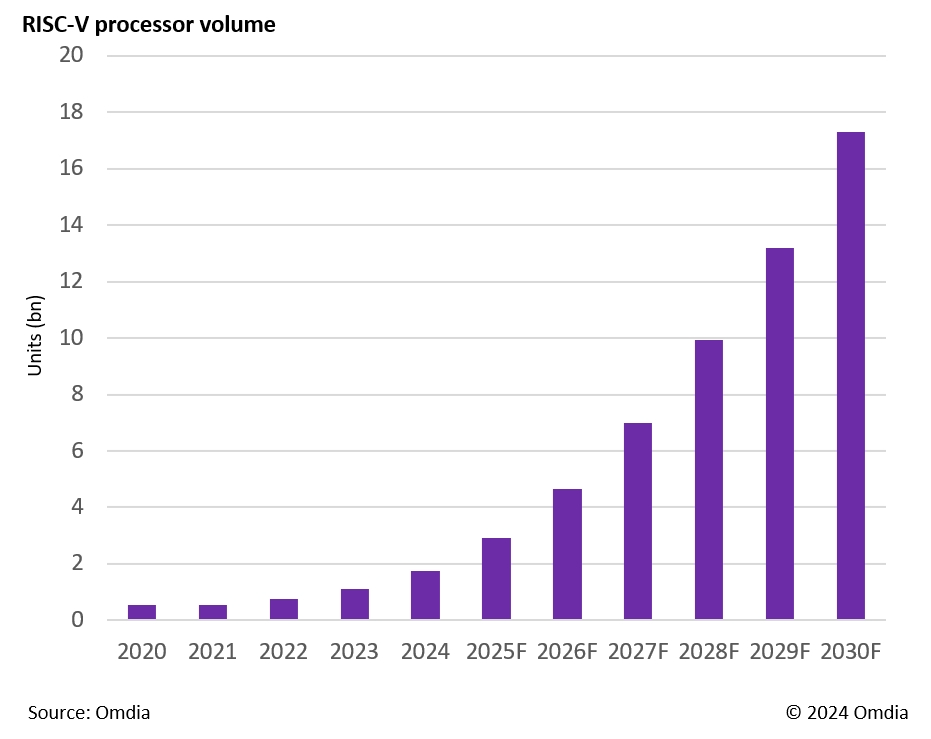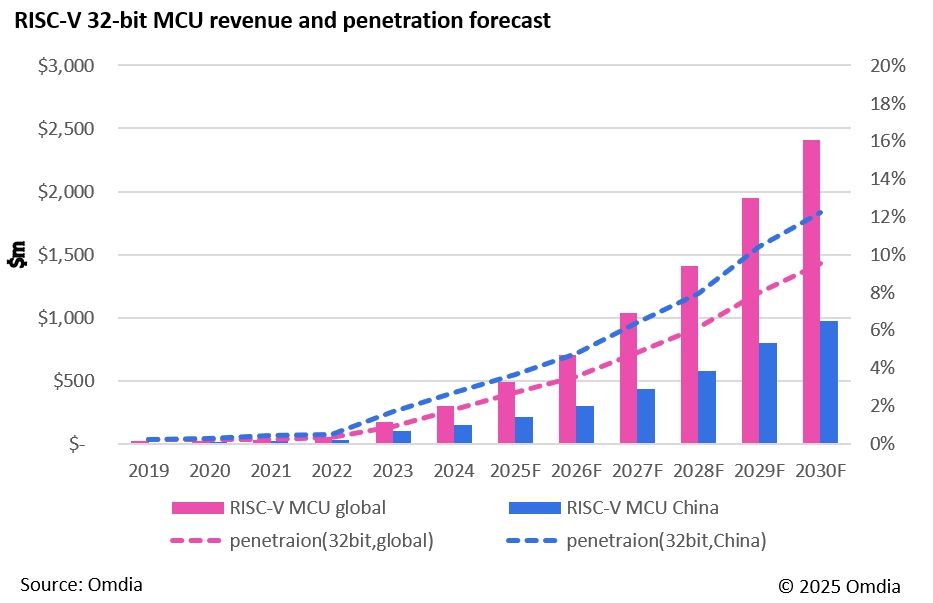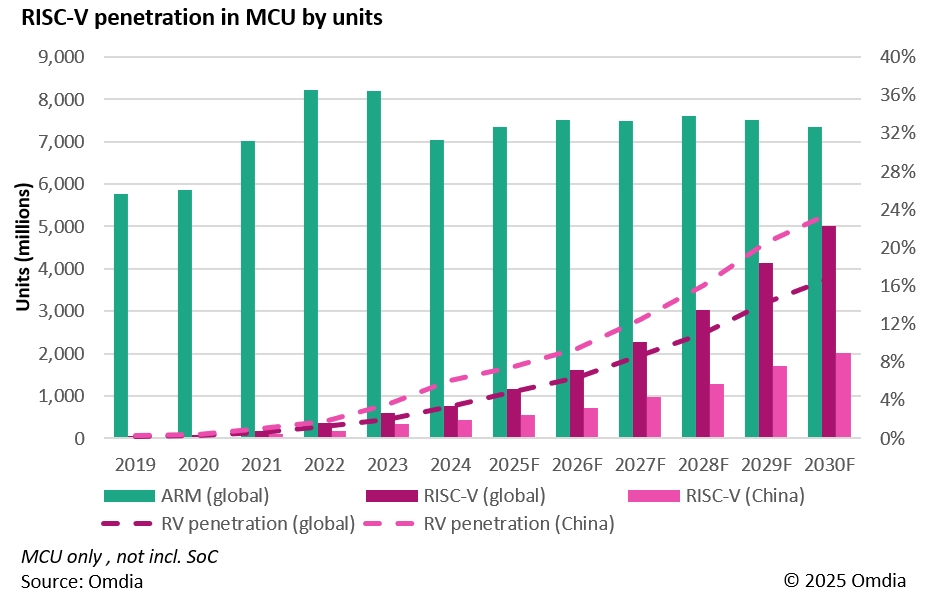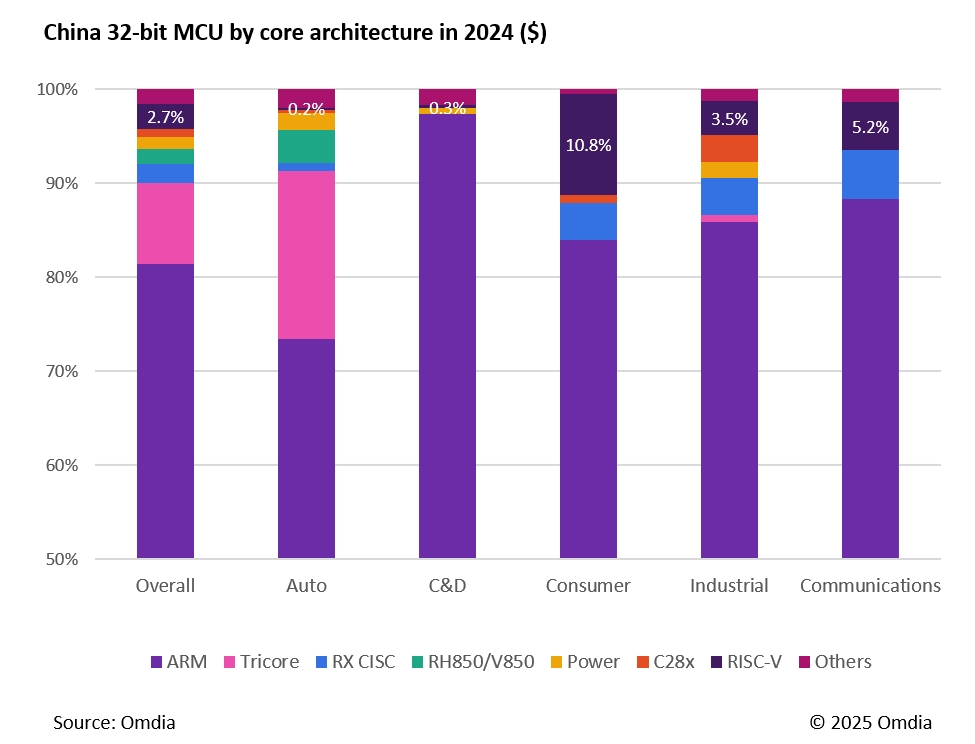 Overview of the Overall Market Size of RISC-V Processors
Overview of the Overall Market Size of RISC-V Processors
RISC-V is an open standard instruction set architecture based on research from the Parallel Computing Laboratory at the University of California, Berkeley. Since the establishment of the RISC-V Foundation (now renamed RISC-V International) in 2015, it has had 36 founding members; today, the organization has over 4,500 members across 70 countries. RISC-V offers several technical advantages, including high performance, low power consumption, compact design, ease of expansion, and most notably, its open-source nature. As a free and open instruction set architecture designed for modern software ecosystems, RISC-V provides significant flexibility and cost advantages.
RISC-V can be flexibly designed and used in various forms of processors, such as xPU/MPU, AI accelerators (NPU), GPUs, FPGAs, and MCUs. Its widespread acceptance stems from the free open-source license it offers, allowing anyone to use the architecture to develop hardware, even customizing the instruction set according to design requirements. Additionally, IP vendors and tool providers have made significant contributions, helping chip designers lower the barriers to entry and transition, thereby effectively promoting the development of the RISC-V ecosystem.
Overall, processors with RISC-V technology have been growing at an astonishing rate, with a compound annual growth rate (CAGR) of 75% from 2020 to 2024. By 2030, Omdia predicts that the annual growth rate will remain close to 50%. This translates to an approximate annual growth rate of 57% over the ten years from 2020 to 2030. Compared to previous technology architectures such as x86 and ARM, this growth rate is unprecedented.

Overview of RISC-V Penetration in MCU Devices and Future Predictions
RISC-V is very suitable as a cost-effective and scalable product solution, making it a good choice for startups looking to differentiate themselves by selecting the right IP provider to quickly enter the RISC-V market. For larger companies, maintaining existing market share while investing resources in RISC-V to test market reactions before gradually increasing investment may be a wise strategy. Microcontrollers, due to their relatively compact structure and wide application, have been adopted first in the MCU field before gradually moving to higher-end applications compared to more computationally powerful MPUs/SoCs. Especially in the last three years, more and more RISC vendors have entered the RISC-V space, and its growth rate is booming. Omdia predicts that by 2030, the penetration rate of RISC-V in the global 32-bit MCU market will reach 9.5%, with 12.2% in China. If measured by shipment volume, the outlook is even more optimistic, with RISC-V’s penetration rate in global MCUs expected to reach 16.7% by 2030, and 23.6% in China, making it a mainstream architecture in the chip core and accelerator market. Of course, the market is constantly changing, and we welcome a diverse range of free choices in the market.


The Development Potential of RISC-V in Automotive and High-Performance Computing Fields is Vast
In the field of computing control chips, a new architecture typically takes decades to be established, gradually accepted by the industry, and mature. The ten years since the establishment of the international foundation for RISC-V is not long. RISC-V is growing rapidly, but from a global perspective, it is still in the early stages of its growth curve. RISC-V also follows the natural laws of development; we see its applications gradually penetrating from mainstream consumer areas to industrial control, communication connections, and then into more challenging areas of high performance, high energy efficiency, and high security. Therefore, RISC-V has many fields where it can maintain growth, especially in automotive and high-end accelerated computing, which are high-barrier, high-value-added areas that can fully utilize its flexible scalability and simple design, conducive to achieving better PPA (Performance, Power, and Area) metrics.

This seemingly bottleneck-free development trend is supported by the vigorous promotion and construction of the entire ecosystem in both hardware and software. They mutually promote each other, gradually moving towards a mature and healthy development stage.
Unlimited Prospects forRISC-V
RISC-Vis a new architecture that can continuously innovate. Compared to existing traditional designs, its core design typically achieves better performance while maintaining a smaller chip size. Additionally, with its scalability and support for vector and security features, RISC-Vhas been proven to be very suitable for supporting the current booming AIaccelerator designs. RISC-Vhas already entered many high-end applications, such as high-performance computing and data centers. Like the development path of every emerging innovative technology, although initial market revenue and share may not be very high, its growth trajectory is remarkable, and its vast prospects should not be underestimated.Omdiabelieves that the relationship between ARM and RISC-Vis not one of replacement but rather a healthy competitive relationship. Over time, RISC-V is expected to become the leading choice for RISC architectures, complementing ARM and, together with other architectures, creating a richer and more diverse ecosystem. Finally, in today’s complex and changing trade environment brought about by tariffs and the opportunities presented by AI-driven chip reconstruction, adhering to an open and self-controllable architecture will undoubtedly be embraced and adopted by more chip designers, with broad development prospects!
Copyright and interpretation rights of the article belong to the WeChat platform Omdia.


Omdia is part of Informa TechTarget, Inc. (NASDAQ: TTGT), an organization focused on technology research and consulting. Through in-depth insights and actionable recommendations in the tech market, Omdia helps organizations make informed growth decisions.

omdia.com

